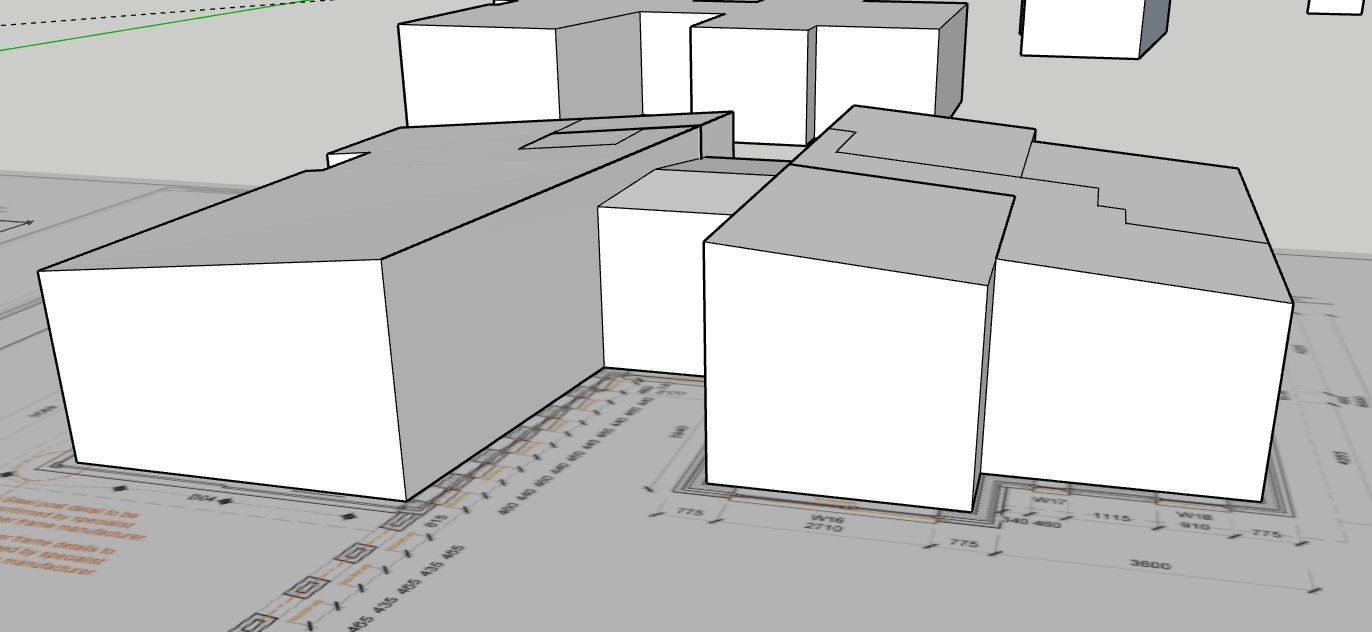
Part L: SAP Calculations
Building Compliance Testing Limited can provide you with a fast and cost effective Elmhurst Certified SAP Calculations.
 SAP Calculations
SAP Calculations
SAP stands for ‘Standard Assessment Procedure’. A SAP assessment involves using a calculation method to predict the energy performance of a building – this includes houses, flats and all other residential properties. However, it is not just required to have a SAP calculation carried out on a complete new build, it is also a requirement for certain extensions which exceed the threshold and any conversions.
This calculation works by assessing the level of energy which is likely to be used, taking into account the expected occupancy, and based on an average, comfortable way of living.
The calculation is a desk based assessment and is typically split into two parts:
The first part is the design stage. At this stage, the assessor will work up a preliminary SAP assessment based upon the proposed/assumed design and specification to see if compliance is met. If the dwelling is falling short of compliance, we work with our clients to find a solution which meets their requirements in terms or practically and budget. This is known as Predicted Energy Assessment (PEA).
SAP takes into consideration:
– Building materials
– Insulation values
– Thermal Bridging
– Heating and lighting
– Renewable energy technology
To learn more about what are SAP Calculations click here.
When Is A SAP Calculation Required?
New-build SAP Calculation
A new build SAP calculation is a government-required assessment that evaluates the energy performance of newly constructed residential buildings. It involves calculating the Dwelling Emission Rate (DER) and Dwelling Fabric Energy Efficiency (DFEE), ensuring compliance with energy efficiency standards and producing an updated Energy Performance Certificate (EPC).
Extension SAP Calculation
A SAP calculation is a standardized method used in the United Kingdom to assess the energy performance of a building extension, whether it’s a new addition to an existing structure or a separate building attached to an existing one. It considers factors such as insulation, glazing, ventilation, heating and cooling systems, and location climate data. The results are crucial for ensuring compliance with UK building regulations and generating an energy performance certificate (EPC) for the entire building1. Additionally, for overglazed extensions, a specific over-glazed SAP calculation is required to evaluate their impact on overall energy performance2.
Conversion SAP Calculation
A conversion SAP is required on a material change of use.
Over-glazed SAP Calculation
An over-glazed SAP calculation is specifically required when assessing the energy performance of extensions or conservatories with excessive glazing. Building Control typically requests SAP calculations if the total new glazing area in your extension or conservatory exceeds 25% of the extension floor area.
The SAP Calculation Process
A SAP Assessor commences their work by utilizing architectural plans and construction specifications in conjunction with a comprehensive HVAC (heating, ventilation, and air conditioning) specification. Consequently, the drawings must be meticulously scaled, accurate, and encompass all facets, including elevations, sections, floor plans, and site layouts.
The assessor then proceeds to create a model of the dwelling(s) within SAP software, working from these scaled plans, whether manually or electronically. This digital representation forms the foundation for SAP Calculations.
Within this model, the assessor integrates the heating, lighting, and ventilation systems, selecting specific products from manufacturer databases when applicable. Detailed thermal elements, encompassing walls, floors, roofs, and openings, are meticulously included, along with calculations for thermal junctions. Additionally, any renewable technologies and cooling systems are incorporated.
Upon finalization, the SAP calculation generates an array of comprehensive reports, spanning site layout, heat losses, energy demands, seasonal variations, CO2 emissions, renewables contributions, and numerous other aspects.
Let’s Talk About Your Project
Just give us a call on 01621 493594 , or email us at contact@buildingcompliancetesting.com
Other Services
We can also offer a variety of other specialist services through our Partners, including:
– Water Efficiency Calculations
– U-value Modelling
– SBEM Calculations
-Energy Statements
 SAP Calculation Frequently Asked Questions
SAP Calculation Frequently Asked Questions
Questions? We’ve Got Answers!
Find below a list of common frequently asked questions about SAP Calculations.
How do I prepare for a SAP Calculation?
- In order for us to create your SAP and EPC, we will require the following:
The architect’s building regulation drawings (floor plans, cross sections, elevations, site plan) - Construction specification details (such as a wall, floor, and roof build ups, heating systems, any
renewable technologies installed) - Window specification
- Any renewable systems being utilised
 Have a project in mind?
Have a project in mind?
Let’s get to work.
 Building Compliance Testing empowers the built environment sector to deliver projects that go beyond environmental planning and building regulation compliance.
Building Compliance Testing empowers the built environment sector to deliver projects that go beyond environmental planning and building regulation compliance.
From concept to completion, we provide all your compliance needs under one roof.
Build. Comply.
Sitemap
Careers
Privacy Policy
Terms and Conditions
 Contact Us
Contact Us
Office Address
26 Wantz Road, Maldon Essex CM9 5DE
Call Us 24/7
01621 493594
Email Us
contact@buildingcompliancetesting.com
Follow Us
@build_comply
